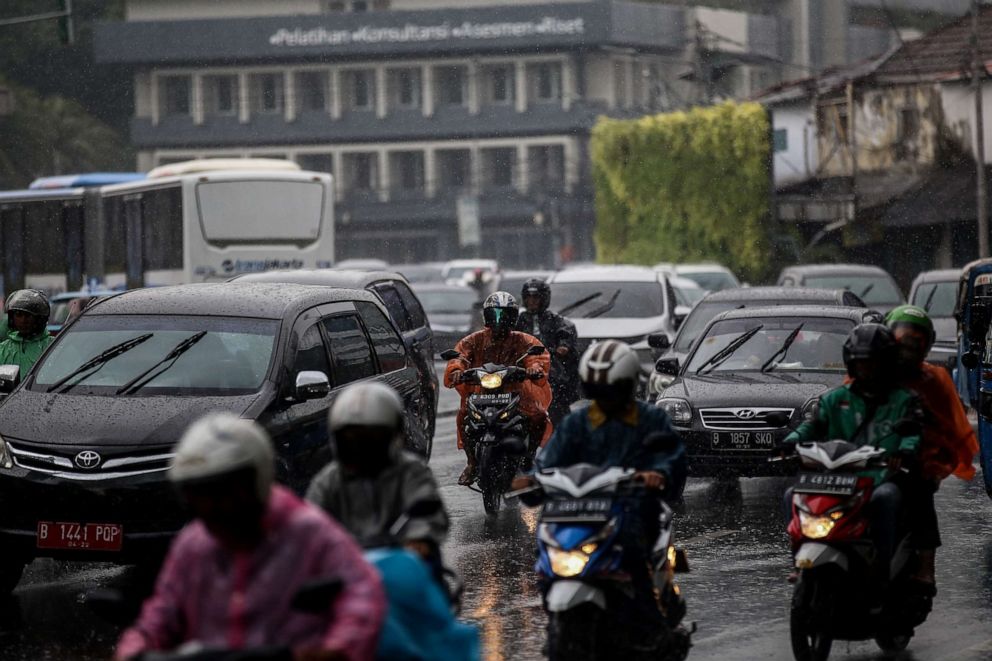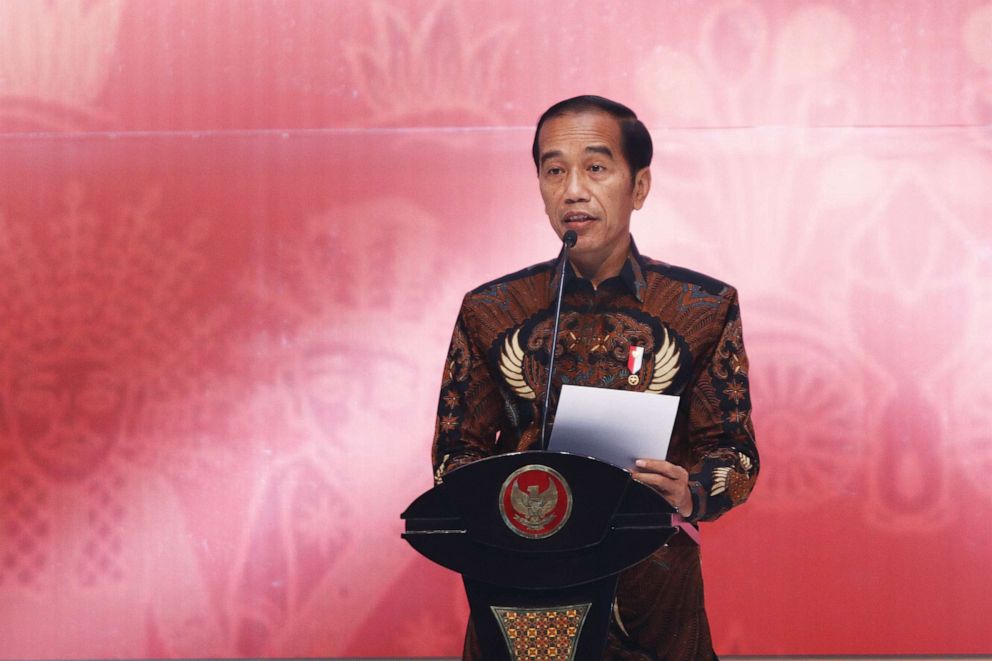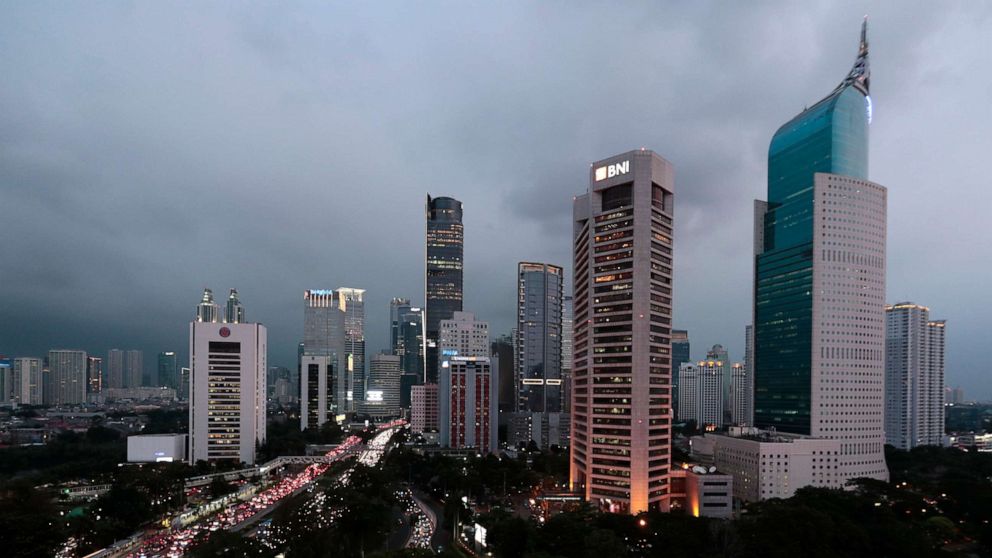Time is running out for Jakarta, the sinking capital of Indonesia, amid calls for a new capital city
LONDON -- This week, Indonesia's president announced that the capital Jakarta was sinking at an alarming rate -- and that the capital needed to be relocated.
Jakarta, where former president Barack Obama spent some of his formative years, is one of the world’s fastest sinking cities, but the crisis is not a new one, and -- while many have attributed the impending disaster to climate change -- rising sea water is the least of the city’s many worries.
Indonesia’s massive capital was officially founded in the 16th century, and was chosen by Dutch colonists as their established base in the country for its strategic location -- central, near the coast on an estuary of the huge Ciliwung River. Jakarta was the capital of the Dutch East Indies. But the city was built on a swamp, and poor management and lax regulations have turned the capital into a ticking time bomb, upon which its more than 10 million residents live. The crisis hits the poorest residents in the city and the surrounding region the hardest.
What is wrong with Jakarta?
A lot. One of Asia’s most dynamic and vibrant cities, home to a young and increasingly plugged-in middle class, Jakarta is one of the world's biggest cities in terms of active users for many companies including Blackberry and Facebook. Indonesia is home to more than 260 million people spread across a vast archipelago. But despite its scale, there is an unsustainable pull to the capital for citizens. More than just its administrative capital, Jakarta is the center of Indonesia’s economy, its education institutions and culture.
Overpopulation
A 2010 government-commissioned study found that 474 new cars and 2,946 motorbikes joined Jakarta’s chaotic traffic each day - bringing the total to about 14.4 million cars and motorbikes on the streets of Jakarta and its satellite cities. A staggering statistic, given the capital’s population estimated at just over 10 million residents.

President Joko Widodo earlier this year said the legendary traffic in the Greater Jakarta region costs the country around $4 billion in wasted fuel, health problems and low productivity.
Various schemes and initiatives to combat the traffic have been proposed. A monorail was first proposed in 2004, before being cancelled and revived twice, before finally being abandoned in 2015. A scheme to empower the bus network saw the outside lane on most central Jakarta streets blocked off by the building of a short curb -- squeezing commercial traffic into two lanes, and exacerbating the chaos.
Many of the city’s "bus" routes are actually served by private vehicles. Thousands of unlicensed minivans and motorbike taxis are a frequent sight on the city’s streets -- and residents can hop in and out anywhere along the road for a handful of cents.
Pollution
Indonesia is one of the world’s biggest producers of waste -- creating several million tons of plastic waste each year. After China, Indonesia is the world’s biggest marine polluter, dumping millions of tons of garbage into the sea. Jakarta is also home to the largest uncovered landfill site in all of Southeast Asia.
Despite the monstrous scale of the filth in the Bantar Gebang landfill site, it is still home to thousands of poor families who live amongst the garbage, many of whom salvage among the scraps. Earlier this year environmental campaigner and actor Leonardi di Caprio shared an image on his Instagram of the landfill sight, to highlight the crisis.

A tax on plastic bags was cancelled in 2016 after a backlash from the public and shopkeepers and the government has not been able to come up with a realistic plan to tackle its waste crisis.
The government in 2018 found that 96% of the city’s rivers were polluted with highly toxic wastewater - putting people’s health at risk. This has forced many of the city’s residents to take their water sources into their own hands - and also contributing to the city’s problems.
Lax regulation
One of the main issues contributing to Jakarta’s instability and its sinking levels is the lax regulation that does little to combat the many instances of residents using their own groundwater extraction units, since water from the river is too dangerous to drink. Only 35% of Jakarta’s annual water needs were met by the national water provider -- the remainder comes from private firms and residents digging up their own ground wells. This, among other factors, are the biggest contributors to the city’s increasing flood risk. Despite wells being illegal, there were more than 4,700 counted in 2016 and the number continues to grow.




